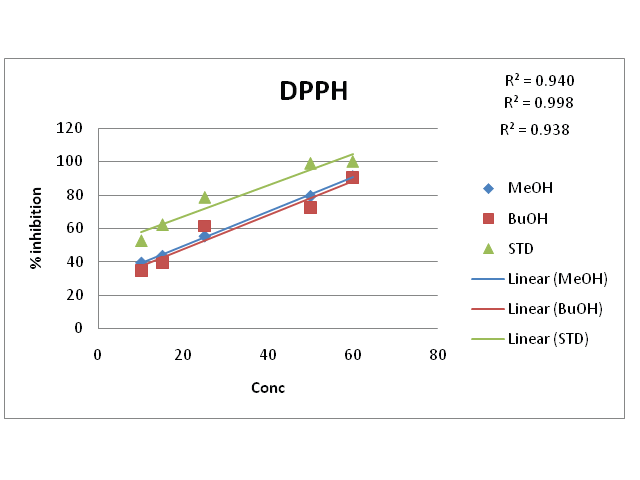Phytochemical screening and in vitro evaluation of free radical scavenging activity of Cordia macleodii bark. (HOOK.F. & THOMSON)
DOI:
https://doi.org/10.5530/ax.2012.3.5Keywords:
Antioxidant, Reducing power, Anti-radical, DPPH, In vitro, Cordia macleodiiAbstract
Antioxidant activity has been assessed by in vitro method for phytochemical fraction of plant, viz. methanolic and butanol extracts of Cordia macleodii bark. This investigation was under taken to evaluate methanolic and butanol extract of Cordia macleodii bark for possible antioxidants potential. The extracts were evaluated for their phenolic content & antioxidant activity. Phenolic content was measured using Folin-ciocalte reagent & was calculated as Gallic acid equivalents. Antiradical activity of both extracts was measured by 1, 1, diphenyl-2, picrylhydrazyl (DPPH) assay & was compared to ascorbic acid and Ferric reducing power (FRAP) of the extract was also evaluated by Oyaizu et al. In the present study three in vitro models were used for evaluate of antioxidant activity. The first two methods were for direct measurement of radical scavenging activity & remaining one method evaluated the reducing power. The present study revealed the Cordia macleodii bark has significant radical scavenging activity.
Downloads
Metrics





